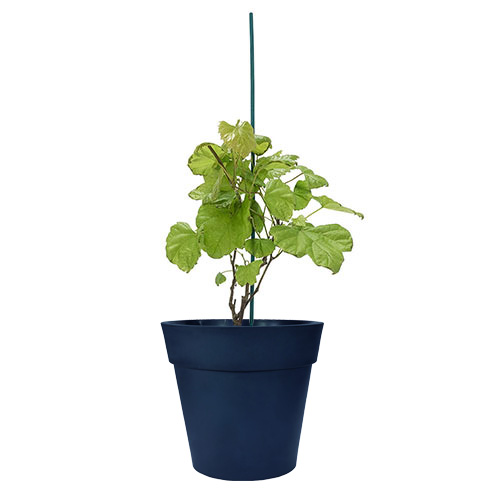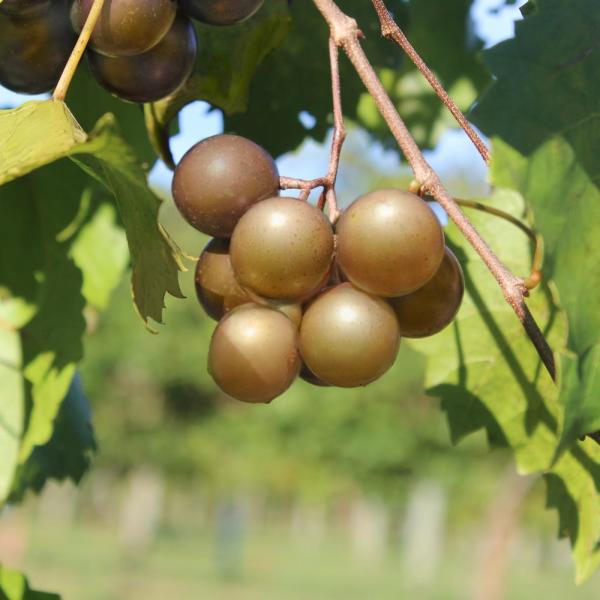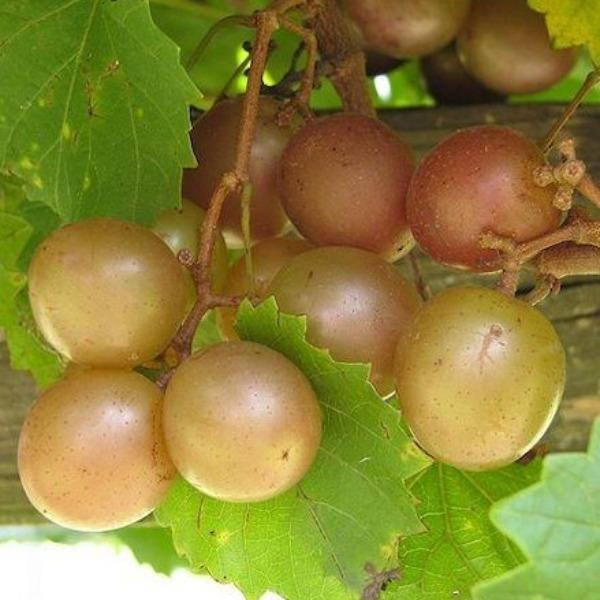Description
The Carlos Grape is one of the most popular Muscadines for making white grape juice and wine at home. The golden, sweet Carlos Grape is also favored for eating fresh out of hand, adding to fruit salads, and for making jelly. The deep green leaves with clusters of half-inch, golden-bronze Grapes hanging below makes any arbor a decorative showpiece. The vigorous, self-fertile vines are easy to grow, resistant to many diseases, and are both cold and heat tolerant as well.
Carlos Grape Vines perform amazingly well when grown on a trellis within USDA Plant Hardiness Zones 7 to 9. These easy to grow and maintain Grape Vines can grow as long as sixty feet, and spread as wide as forty feet, but they can also be contained by pruning. They produce the most grapes in full sun, but will still bloom and make fruit when given some shade. Give the versitile Carlos Muscadine Grape Vine a trellis or fence in your edible landscape and enjoy large crops of sweet, juicy, fall grapes.
Carlos Grape Vine Care
Carlos Muscadine Grape Vines need annual pruning to perform at their best. Prune Carlos Grape Vines in late winter after all grapes have been harvested and the vines drop their leaves and become dormant. When you prune Grape Vines back to the main trunk, new buds emerge along the main woody stalk to become the new spring trailing stems. These new stems should be pruned back to three or four feet out from the main trunk. When such stems are one year old, they will grow that season’s crop. Prune so that the one-year-old wood has several bud spots, and each bud should send forth a grape-growing vine.
Plant Carlos Grapes in full sun and well-drained soil. Water new plants once per week by saturating the ground in a four-foot circle around the vine base. In the summer if rainfall is consistent, reduce watering to times when the soil at the vine base is dry down to two inches deep. Refrain from watering Grape Vine leaves when irrigating and be sure that the growing area is kept free of fallen limbs and rotting wood of any kind.
Harvesting and Uses
When the Carlos Grape vines bloom, their white flowers appear in clusters and attract butterflies, honeybees, and hummingbirds. The Grapes are ripe when they are about one-half inch wide and golden bronze color. Taste a few of the largest grapes to determine if they are ready. Ripe Carlos Muscadine Grapes have a sweet flavor and are filled with a refreshing juice. If the Grapes are sour, wait a few more days and taste again.
The Carlos Muscadine Grape is grown extensively in the Carolinas for use in making sweet white wine. Carlos is also one of the top grapes grown to produce White Grape Juice. White grape juice is used for drinking as well as to sweeten other juices. Store harvested Carlos Grapes in the refrigerator for up to a week. The Grapes can also be preserved by making jelly or freezing for long-term storage. Frozen Grapes can be blended into smoothies or used for other baking recipes.
Advice
Growing Carlos Grape Vines can provide not only delicious fruit but ornamental shade as well. Carlos Grape Vines have deep green leaves that create a lush canopy when the vines are growing overhead on a framework such as a patio arbor. Such a presentation creates a classical look and offers welcomed shade in the hot summer months. The addition of bronze grape clusters hanging down in September provides the final, edible decoration to such a planting.
To grow a decorative edible arbor, plant Carlos Grape Vines in the ground at the base of each support post. As the vines begin to grow, tie trailing stems to the posts using green flexible nursery tape. Unlike nylon cord or wire, green nursery tape will stretch to allow the vines to grow without cutting into the delicate new greenery. The tape can be removed as soon as the vines begin climbing on their own, in about two months or less. Carlos Grape Vines can also be grown upon an arbor from large pots placed at the post bases.





What others are saying
There are no contributions yet.